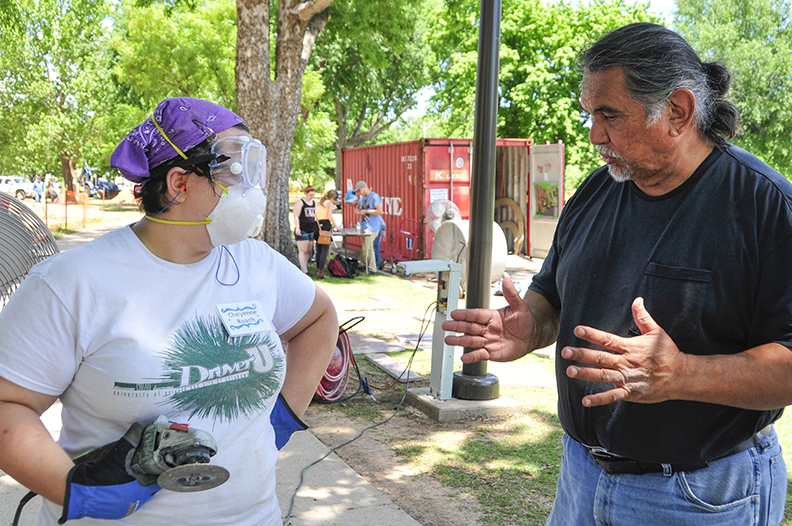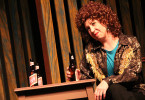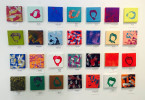This summer, the University of Science and Arts of Oklahoma (USAO) in Chickasha receives another conduit of creativity upon its campus. Conceived and spearheaded by renowned sculptor Jesús Moroles, Coming Together Park will be an acre-wide installation epitomizing what makes the state’s only public liberal arts college so unique. Likewise, his presence marks the institution’s first artist-in-residence, thus setting a cosmic standard for future participants of the program.
Internationally recognized, Moroles’ work includes Lapstrake, a piece nestled across the street from New York City’s Museum of Modern Art, and the Houston Police Officer Memorial in Texas. With his self-built studio in Rockport, Texas, Moroles is comfortably close to the heartland.
“I’ve been doing workshops in Oklahoma for almost 25 years,” he said. “A lot of kids don’t ever get a chance to work with power tools or design and construct something. With me, kids are moving heavy things, like granite. If they can do this, they can do anything.”
Moroles — whose art book, Granite Sculpture, is available in paperback — has made his presence felt across much of the state, working closely with the Goddard Center for the Visual in Ardmore, as well as throughout Tulsa. In fact, much the sculptor’s material is derived from the western half of the state in the appropriately titled town of Granite. However, Moroles elaborated upon what brought him to USAO specifically.
“I’m trying to fulfill one of my lifelong goals: to create public spaces,” he said. “In doing that, I want people to take ownership, work on and create the space. Encourage them to make things that cross borders, culture, and gender. Helping them put forth something they’re proud of, as well as beautiful.”
Coming Together Park will provide something that seems in short supply on campus. The installation will feature granite circles surrounding many of the area’s trees, a lighted, granite river, clear walkways and several areas to sit. The park will be, as the sculptor mentioned, “a place to come and be.”
The endeavor also signifies one of the university’s most pivotal advances. An artist-in-residence is a historic first for any institution, compounded exponentially for USAO given the magnitude such an individual may bring.
“Having an artist-in-residence program work long-term depends on who that first person is,” USAO Vice President of University Advancement Michael Nealeigh explained. “They set the standard and serve as a model for people requested to fill such a position. Jesús Moroles sets a very high standard that we are confident people will want to be a part of.”
On a walkabout with the artist, we took note of the park’s foundation. There, Moroles explained some of both the overt and unseen nuances of the installation.
“Here, you can see we’re making granite rings around all of these trees,” the sculptor said, motioning towards a rocky halo. “We’re making a grassy knoll and irrigating it over here. People will be able to lay down and sit there as if they were in a recliner.”
Moroles continued to discuss several art benches and a new series of sidewalks leading out of the school’s dormitory, Sparks Hall. Similarly, the artist pointed out several positions of electrical outlets for those in need of a charge, as well as lighting fixtures that will provide a safe passage at night. Most interesting, however, was a granite river planned to run for the duration of the park.
“We decided to run everything into this,” the artist said as we followed the shallow valley. “A lot of times in Oklahoma, people don’t even consider drains. We’re making the river to fix that problem.”
The recent flooding has, of course, taken a toll on the development of the installation.
“Even for here, the amount of rainfall is unheard of,” Moroles said. “I don’t know how we’re getting anything done.”
The artist found resolve in the diligence of the students aiding him, however.
“They’re working very hard, even around tornadoes, rain, and flooding.”
For Moroles, it seems as though the students have adapted quickly to his craft. Granite sculpting is exceptionally scarce among curriculums. And, just as it is incredibly taxing on one’s body, it also fosters the potential to be very dangerous.
“The first day is all safety. In fact, every day is safety. I can hear when somebody is wrong,” he said to the tune of a howling saw.





